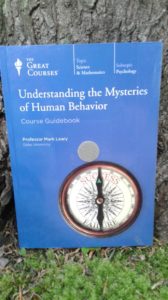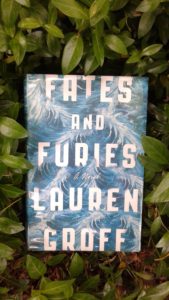Lauren Groff’s Fates and Furies falls into my newly created genre of relationship, or quite simply, “apres romance.” This novel begins at the most extreme height of passion, usually where most romance plots end. Yet does this relationship feel real? With the help of Professor Mark Leary at Duke University, I apply Understanding the Mysteries of Human Behavior to separate fact from fiction.
FACT – Lotto’s love at first sight is actually a psychological term called “excitation transfer.” After his stage performance, he sees Mathilde, relabels his excitement to her and falls in love. BOOM! Groff captures the passionate love of newlyweds. Apparently, the brain in love is a brain on drugs. Pumped full of dopamine and phenylethylamine (PEA), the brain is excited and exhilarated in the early phase of a relationship. Then, as the neurotransmitters chill, the relationship shifts to more compassionate love and douses the brain with oxytocin, leaving a warm fuzzy connected – all is right with the world – feeling. Groff succeeds here in portraying the shift to career, financial and family concerns.
Opposites Attract
FICTION – Relationships run into problems based on personalities and character traits. In general, happy people tend to have better relationships. According to Leary, people who are disagreeable, hostile, suspicious and selfish will have less satisfying relationships. In Fates and Furies, Lotto narrates the first half of the book. His personality and basic nature attract followers and fans, and Mathilde may be the only one to deal with his alcoholism and bi-polar tendencies. She keeps Lotto hinged and producing plays. Mathilde, who seems opposite of Lotto, may succeed because of her stealth-like dominance in running their lives. As Lotto describes, she runs on the passive-aggressive side.
Marriage is Hard
FACT – Expectations are higher in modern relationships according to Leary. Our previous experiences make our comparison levels higher. There’s even a theory for this – Interdependence Theory. The criteria for rating current relationships is based on previous relationships. For the same amount of effort or “costs,” what are the rewards with someone else? Lotto and Mathilde’s relationship exceeds previous relationship experiences which make them satisfied. Since other alternative relationships do not compare, the couple stays committed.
Until Death Do We Part
FICTION – As a relationship ages, the perceived costs increase. Successful relationships manage to incorporate increasing rewards to adjust for the current costs. Lotto accepts the cost – his childless marriage. Mathilde increases Lotto’s rewards by using her leverage to make him successful and lets him naively believe his talent triumphed. Responsiveness is also a key to marriage success. Mathilde’s anger at Lotto’s speech about her role in their relationship made her pull back. Lotto came to her in apology, and they reunited. Had he harbored a grudge about being abandoned after his speech, the rift between them would have grown. Unsuccessful marriages foster an environment where each partner alternately disengages further and further.
Overall, Groff represents the ongoing challenges of a long-term relationship. If anything, the Lotto and Mathilde relationship is so three-dimensional that the other relationships in the story are flat.
This concludes my three-part series based on the novel Fates and Furies. When a novel succeeds on so many levels, I want to know why. How did the author accomplish so much? What was unique about this story? If there is any doubt, I confess a writer’s respect and a reader’s admiration for Lauren Groff’s creativity in structure “Give It To Me Straight“, mastery of style “It’s Greek to Me” and realistic depiction of a relationship over the span of two life times “For Better or For Worse.”

